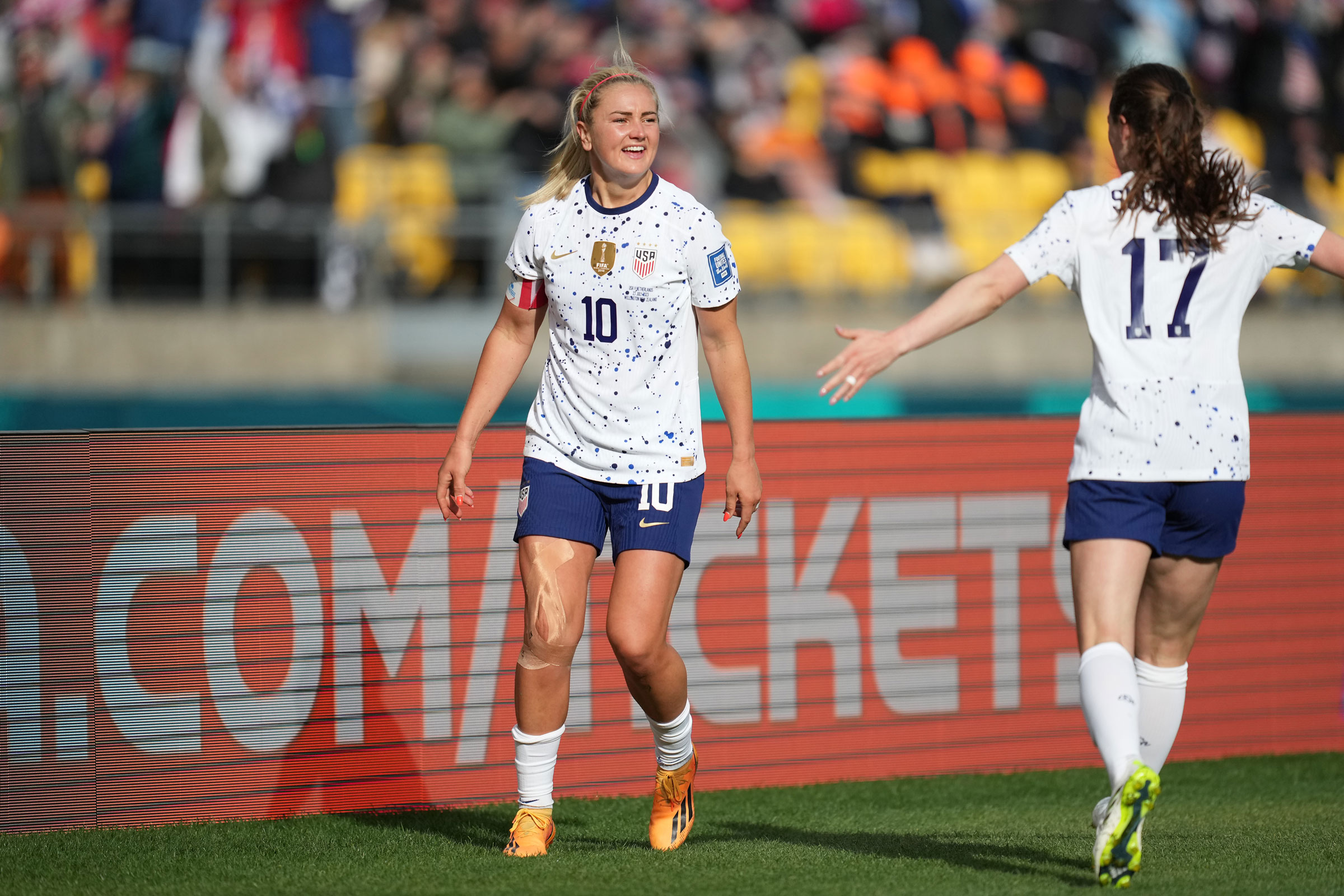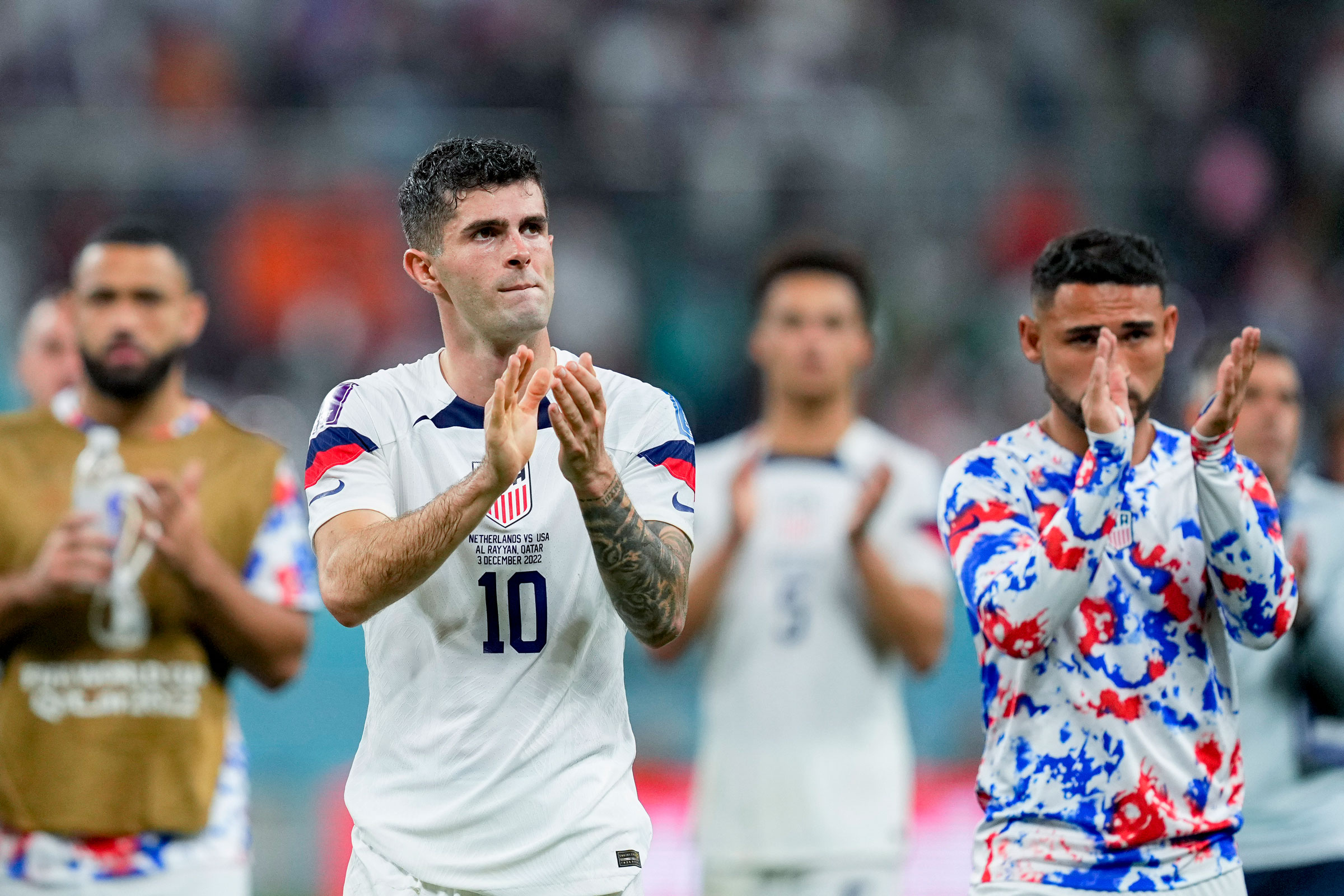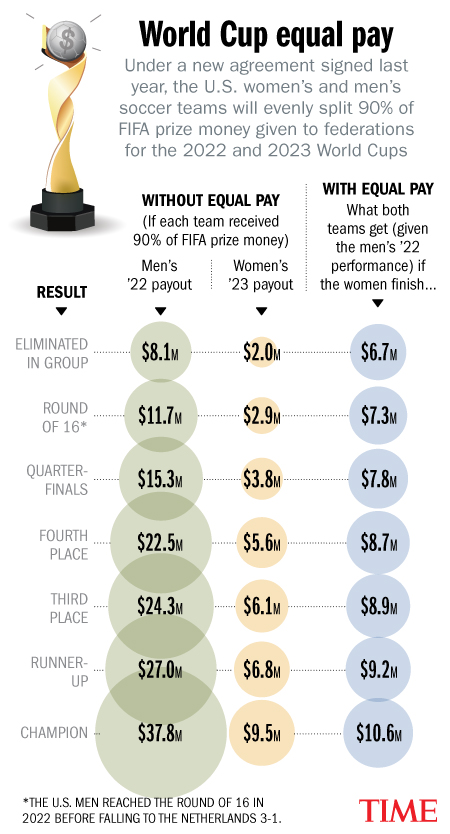
That wild cheering you hear from a neighboring house, or the local sports pub, or in the middle of the street whenever the U.S. Women’s National Team (USWNT) scores a goal during the 2023 World Cup?
Could very well be the hooting and hollering of a U.S. men’s national-team player, knowing it could make him richer.
There may be no bigger fans of the USWNT during this World Cup than the American men’s players, who competed at the World Cup in Qatar late last year, falling to the Netherlands 3-1 in the round of 16.
And similarly, when the men squeaked out of the group stage in Qatar—via a tense 1-0 victory over Iran—the women’s players had 1.8 million reasons to cheer.
That win put an extra $1.8 million in the USWNT’s pockets.
Read More: Megan Rapinoe Won't Go Quietly
The reason for all the rooting: the historic collective-bargaining agreement (CBA) that the players’ unions for both teams signed with U.S. Soccer last year. Under the deal, the federation takes a 10% cut of the total prize money that FIFA awards the U.S. for its finishes in the 2022 and 2023 World Cups and the other 90% is split evenly between the men’s and women’s teams.
So the better each team performs, the more the players on both squads make. The agreement is the first of its kind.
For the most part, the men have little incentive to share. FIFA currently gives out four times as much money for men’s performance as for women’s. It doled out $440 million in payouts to federations for the 2022 World Cup. In 2023, it will offer $110 million in performance-based pay to federations. (For the first time, FIFA has deemed that a portion of that cash – nearly $49 million in total – go to the participants, with each World Cup player earning at least $30,000 and the amount increasing each round.)
So, for example, while Argentina’s soccer federation received $42 million when its men’s team defeated France in the 2022 World Cup final, Argentina would receive a fraction of that – $10.5 million – if the women won in Australia, with at least $6.2 million of that haul going to players ($270,000 for each of the 23 players on the roster). Even a men’s team that was defeated in the round of 16 in Qatar would generate more FIFA prize money ($13 million) than the women’s team that wins the World Cup this year.
The Americans, however, have agreed to eliminate FIFA performance-prize inequity and split the teams’ share of the prize money equally between the men and women.
The women divvy up the cash evenly among the 23 players who make the World Cup roster. The men share a portion with players who also participated in World Cup qualifying games but did not make the final roster for Qatar.

For the sake of comparison, if the U.S. men’s and women’s teams received 90% of the FIFA payouts in 2022 and 2023 but kept their own hauls, the only way the women could have outearned the men would have been if the women had won the 2023 title (and received $9.45 million after the federation’s cut) and the men had been eliminated in the group stage (and gotten $8.1 million).
In other words, the women would have to perform at their very best, and the men at their very worst, for the women to earn more.
Instead, each team will now earn the same. And given how the U.S. men and women traditionally perform—and how the men performed in 2022—the CBA could shake out just fine for both sides.
Read More: How the Women's World Cup Evolved Into What It Is Today
Yes, if the U.S. had gone on a surprise run to the title in Qatar, under the equal-pay agreement the women would have gotten a windfall at a significant expense to the men. A Men’s World Cup win, combined with, say, a Women’s World Cup win, would have netted each team $23.625 million; that’s $14.175 million more than the women would have otherwise earned, and $14.175 million less for the men.
The benefit to the women would have been even more substantial if the men had won the championship in Qatar and the women had gotten eliminated at the group stage this year. Each team would have gotten $19,912,500 under the terms of their agreement, which comes out to a $17,887,500 loss for the men’s side. With that money accruing to the women, each U.S. Women’s World Cup player would have earned an extra $777, 717 in FIFA performance prize money.
But the American men didn’t go that far in the tournament. Unlike the women, who are four-time World Cup champs, they never have. The U.S. men’s team’s best performance in the modern era: a quarterfinal finish in 2002.
CBA negotiators were well aware of this history. The men were unlikely to make an equal-pay deal if they were a traditional power. What actually happened in 2022 was more in line with expectations: the men made the knockout stage but lost in the round of 16, just like they did in 2010 and 2014, the last two times the Americans qualified for the Men’s World Cup before Qatar. (The U.S. men didn’t even make the 2018 World Cup in Russia.)

If the women three-peat and win the World Cup title this year as they are favored to do, the men’s and women’s teams will each receive $10.575 million, which is $1.125 million more than the women would have received if they got 90% of the FIFA payout but didn’t have an equal-pay deal in place. That’s an extra $48,913 per women player ($459,783 per player in FIFA prize money, versus $410,870).
Not chump change. But also not earth-shattering losses for the men.
If the women are eliminated early, however, the men lose out more. If, say, the U.S. survives Portugal on August 1 and moves on to the knockout stage, as expected, but is upset in the round of 16, each side then gets $7,312,500, a $4,387,500 loss for the men.
Thus, that loud male cheering you may be hearing during the USWNT games.
This CBA runs through 2028. The economic machinations may shift—in a major way—once the 2026-2027 World Cup cycle rolls around. FIFA president Gianni Infantino has vocalized his desire for equal prize money by the 2027 Women’s World Cup. Under the U.S. CBA, 80% of the FIFA payouts to federations will be split between the men and women in the next World Cup cycle. (Presumably, the overall payouts will increase, so the players could still see a prize money increase in their bank accounts, even though their share of the whole pot is smaller.)
Regardless, if Infantino isn’t just blowing smoke about equality, the women could risk losing out in 2027. If the prizes are indeed identical, and the women go far, as per usual, but the men flame out in the 2026 World Cup—despite North America hosting—the men stand to benefit in a major way from the CBA.
No matter: both sides are locked in. Soccer equal pay is signed, sealed, and delivered in the U.S., at least for the next few years.
All the men and women can do at this point is pull hard for the other.
That’s not a terrible place to be.
More Must-Reads from TIME
- How Donald Trump Won
- The Best Inventions of 2024
- Why Sleep Is the Key to Living Longer
- Robert Zemeckis Just Wants to Move You
- How to Break 8 Toxic Communication Habits
- Nicola Coughlan Bet on Herself—And Won
- Why Vinegar Is So Good for You
- Meet TIME's Newest Class of Next Generation Leaders
Write to Sean Gregory at sean.gregory@time.com